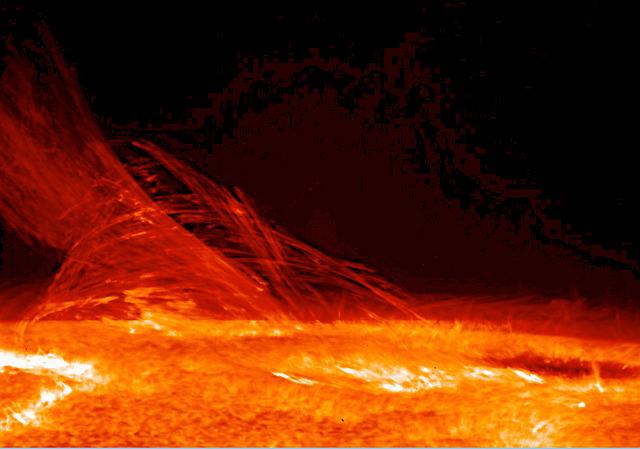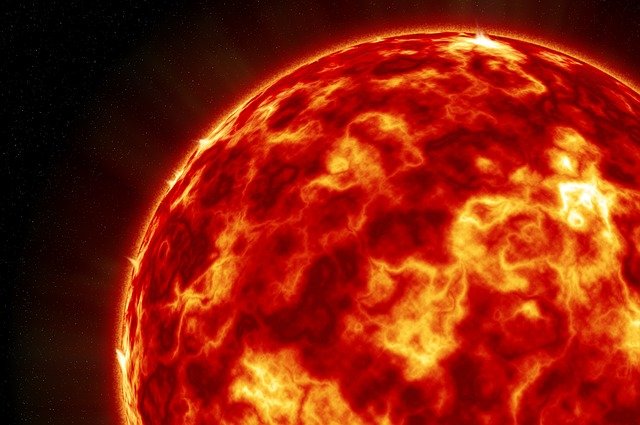*This post may contain affiliate links. This means we may make a commission if you purchase an item using one of our links*
Stars are the most abundant objects in the Universe. The stars that become red giants are those that have used up their nuclear fuel and are now burning helium; this process is called “helium flash.”
Learn how red giants form and why scientists use this terminology. Discover why our Sun will one day become a red giant and why others will enlarge into red supergiants.
How Are Red Giants Formed?
Table of Contents

Stars have a life cycle, just like living things on Earth. A star starts as a protostar, a large cloud of gas and dust in space. The gravity of the protostar pulls the material together until it gets hot enough for nuclear fusion to start. This causes it to become a main sequence star, which is when it spends most of its life.
As time goes by, the hydrogen fuel in its core gets used up and starts to fuse into helium instead. The outer layers cool off so they can be seen more easily from Earth as they form an orange or red giant.
A red giant is a large and bright star; it will have a radius that is tens to hundreds of times bigger than that of the Sun, but the temperature of the outer envelope is much cooler, which gives the star a reddish-orange tint.
As the outer layers expand, the star’s gravitational pull on itself becomes stronger and starts to shrink and contract the core. This process causes the temperature and pressure to increase once more until the process of nuclear fusion can begin again.
The star is now powered by helium which will quickly run out; this means that a star will only last as a red giant for approximately a million years.
Once the helium runs out, the core shrinks again, while the star begins to fuse helium from further outside its center. As the outer layers expand, the star cools and turns red again in what is known as the second red giant phase.
When Will A Star Become A Red Giant?

Stars are born from the gravitational collapse of interstellar gas and dust. Stars spend most of their lives in a stable state, fusing hydrogen into helium, but this process eventually ends as the star runs out of hydrogen.
For a star to transition to a red giant, it must possess a mass between one-half to eight times the mass of our Sun; astronomers term these stars low or intermediate mass.
Nuclear fusion is the process by which two atoms combine to form a larger one. This process occurs in a star’s core, where hydrogen atoms are combined to form helium. The sun is powered by nuclear fusion, but its hydrogen supply is not limitless.
The sun converts roughly 600 million tons of hydrogen to helium every second. That sounds like a lot, but you have to remember that the Sun has a diameter close to a million miles. As a typical star of its type, our Sun has enough hydrogen to last about 10 billion years.
Scientists approximate that our Sun is around 4.5 billion years old, so it still has a long way to go before it converts into a red giant. These hydrogen-burning stars, such as our Sun, are in their main sequence phase, where stellar equilibrium is achieved through a perfect balance of outward pressure and inward gravitational push.
Eventually, the star runs out of hydrogen, and it begins to contract under its own gravity.
Why Do Some Stars Become Super Red Giants?
A red supergiant star is a type of giant star that is much larger than our Sun; the star will have a surface temperature of 3,500-4,500 kelvin, and its radius will be 20-40 times greater than the Sun. These stars are in the latter stages of their life cycle and will eventually die.
“Red” refers to their cooler status, while “supergiant” describes their enormous size. Red supergiants are the most giant stars in the Universe; many scientists believe that VY Canis Majoris could be the largest, with a size that is 1,800 times larger than our Sun.
Super red giants are similar to regular red giants but involve much larger stars (those with at least ten solar masses). Again, a red supergiant forms when the hydrogen supply runs out in the core of a massive star. During this time, the star begins to fuse heavier and heavier elements.
The process ceases when the star begins to fuse iron because this requires more energy than it generates. Most super red giants will explode as Type II supernovae when this happens. While red giants and red supergiants are similar in many respects, they have two key differences: a red supergiant requires a much larger star, and a supergiant lasts for a far short period, usually only a hundred thousand years.
Summary
The red giant phase is the final stage in the evolution of low to medium-mass stars. The star has used up all the hydrogen in its core, which means it can no longer produce energy through nuclear fusion reactions. As it converts to a red giant, the star begins to fuse helium at its core as the outer layers expand and cool, giving it the appearance of a “red giant.”
References
Red Giant | National Schools’ Observatory (schoolsobservatory.org)
EarthSky | What are red giants?
Red Supergiant Star – Universe Today

